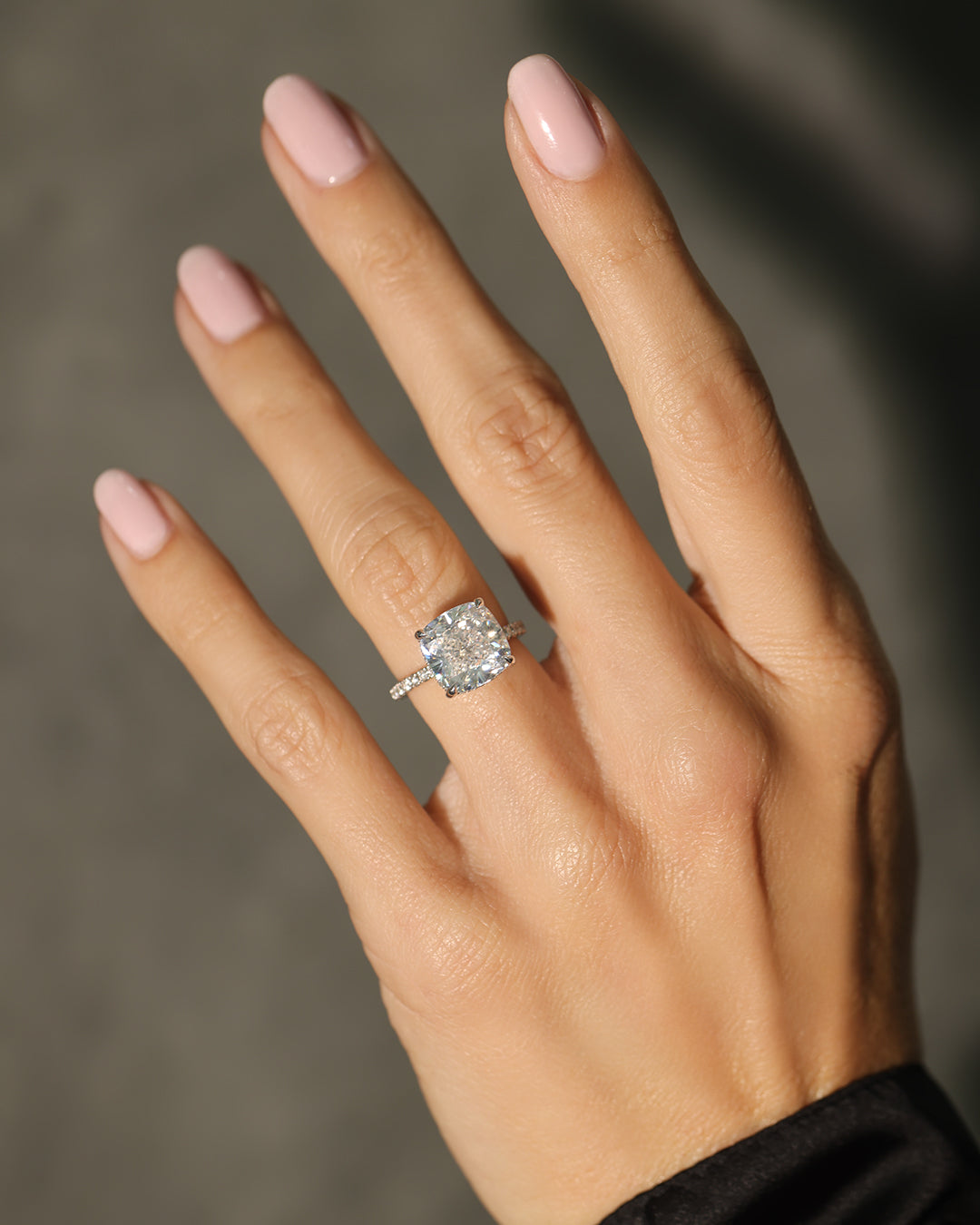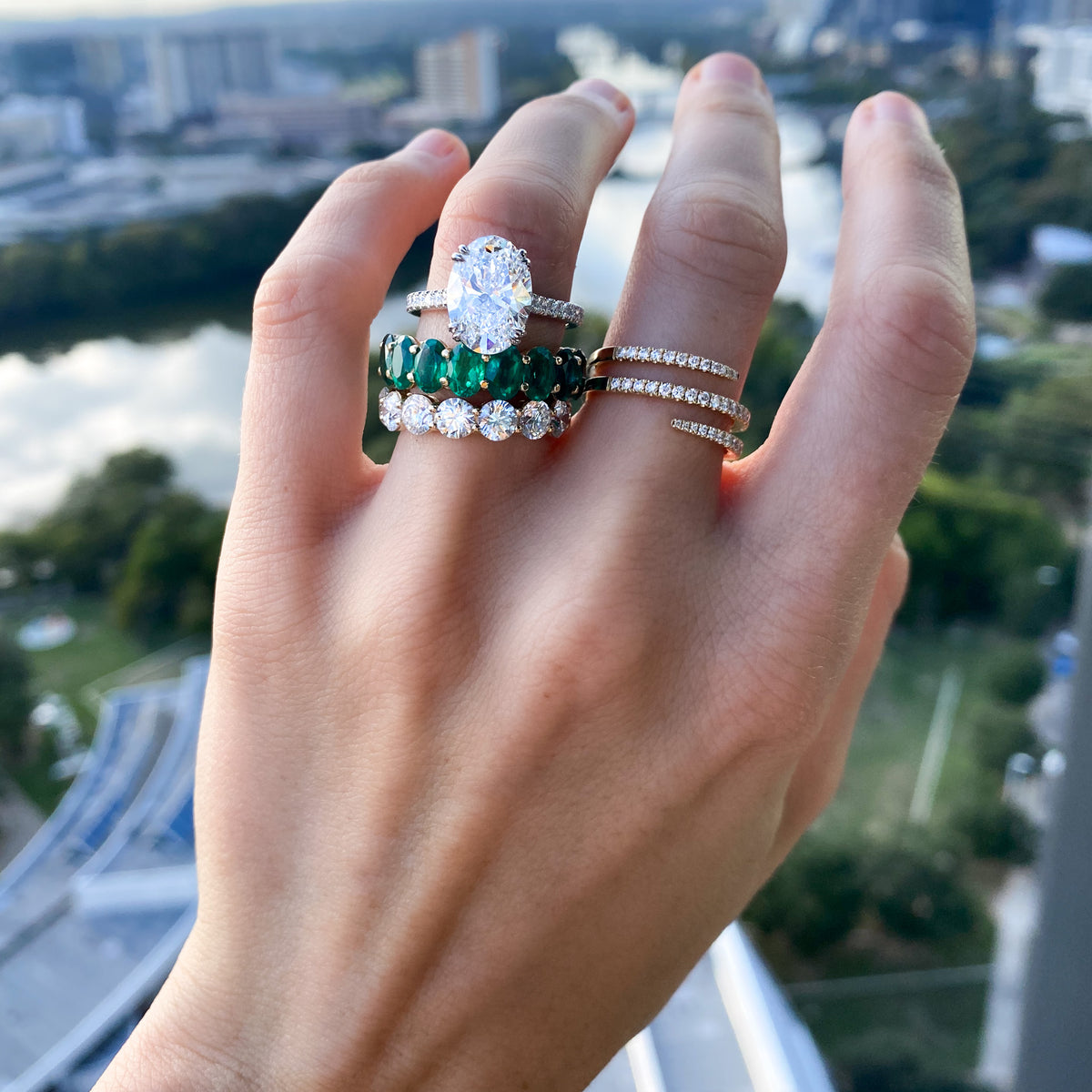The Benefits of Finding Lab Grown Diamond Involvement Rings for Your Proposition
Lab-grown Diamond interaction rings provide a compelling choice for couples considering their proposal choices. These rubies are morally sourced and produced in controlled environments, addressing both environmental and ethical worries. In addition, they use substantial expense savings, enabling bigger stones or unique layouts. With developments in modern technology, the charm of lab-grown rubies continues to grow. Understanding these benefits can influence a pair's decision-making process in profound methods. What elements should be prioritized when making this choice?
Honest Sourcing and Environmental Impact
As customers increasingly prioritize sustainability, the increase of lab-grown Diamond engagement rings uses an engaging alternative to commonly mined rubies. These lab-created treasures are generated in regulated environments, significantly reducing the honest predicaments associated with Diamond mining. Traditional mining typically involves unscrupulous labor methods and contributes to environmental deterioration, consisting of deforestation and habitat devastation.

Cost-Effectiveness: More Value for Your Spending plan
Lab-grown Diamond interaction rings not only align with honest worths however also offer substantial cost advantages. Typically, these rubies can be priced 20% to 40% reduced than their extracted counterparts, allowing pairs to maximize their spending plans without sacrificing high quality. This cost-effectiveness enables customers to purchase larger rocks or higher-quality setups, improving the general visual of the ring.
In addition, the openness in pricing connected with lab-grown diamonds removes the concealed expenses commonly related to extracted diamonds, such as accreditation and transportation fees. Couples can also gain from lower insurance coverage costs because of the minimized worth of lab-grown diamonds.
Consequently, picking a lab-grown Diamond interaction ring comes to be a financially smart choice, providing pairs with even more worth for their money. This affordability not only enables a higher selection however additionally equips pairs to pick a ring that genuinely shows their love and dedication.
Identical Physical and Chemical Qualities
The attraction of lab-grown Diamond engagement rings lies not just in their ethical manufacturing however likewise in their impressive physical and chemical homes. These diamonds are developed in controlled research laboratory environments that resemble the natural conditions under which rubies create in the Earth. Therefore, lab-grown diamonds have the exact same crystal framework and solidity as their extracted counterparts, ranking a perfect 10 on the Mohs scale.
Both kinds of diamonds consist of carbon atoms set up in a crystal lattice, guaranteeing similar optical and physical attributes. Lab-grown diamonds show the very same luster, fire, and scintillation as natural rubies, making them indistinguishable to the nude eye. Advanced gemological testing is called for to distinguish between the 2, highlighting their credibility. This parity in properties enables consumers to enjoy the charm and durability of diamonds while making an ecologically aware option.
Bigger Variety of Choices
Laboratory grown up Diamond engagement rings supply a broader array of design alternatives that accommodate varied preferences and choices. Their capability to be tailored allows pairs to develop unique items that show their individual design. This boosted adaptability not only improves the ring's sentimental worth yet likewise makes it a much more personal choice.
Unique Style Alternatives
While typical diamonds usually feature limited design choices, the rise of lab-grown Diamond engagement rings has actually opened a broader spectrum of unique styles and settings. This technology allows couples to check out even more imaginative designs, varying from vintage-inspired to contemporary geometric forms. Lab-grown rubies can be crafted in various cuts, consisting of oval, pear, and heart forms, supplying adaptability that interest diverse tastes. In addition, the ability to combine these diamonds with non-traditional band products, such as rose gold or morally sourced steels, improves the overall aesthetic. With unique setups like halo or bezel, these rings can be personalized to mirror specific tales and choices, making each involvement ring not simply a symbol of love, but additionally a standout art piece.
Personalization Opportunities
A growing interest in lab-grown Diamond engagement rings has brought about an increase in customization opportunities, allowing couples to create absolutely personalized pieces. Unlike typical diamonds, lab-grown alternatives can be customized to fit private tastes and preferences. Pairs can pick from a broader variety of shades, dimensions, and shapes, enabling them to select a diamond that reverberates with their special design. In addition, modification prolongs past the Diamond itself; settings can be created to enhance the chosen stone, whether one prefers traditional, contemporary, or complex styles. This flexibility not just boosts the psychological importance of the ring however also enables for an extra economical technique, as couples can prioritize features that matter most to them without jeopardizing on quality.
Openness in the Diamond Sector
Exactly how can customers browse the complexities of the Diamond market when openness continues to be a critical worry? The standard Diamond market frequently lacks clear info pertaining to the beginning and moral sourcing of diamonds. This obscurity can bring about customer skepticism and honest issues bordering dispute diamonds and environmental impact. Conversely, lab expanded rubies offer a service to this transparency issue. These diamonds are produced in regulated environments, enabling customers to access detailed info about their provenance.
Trustworthy sellers of laboratory expanded diamonds navigate to this site typically offer certificates that outline the details of the Diamond's creation, including its dimension, top quality, and the technology made use of. This degree of transparency equips customers to make enlightened choices, straightening their purchases with personal values. As awareness of dishonest techniques in the Diamond market grows, the clear, moral nature of lab grown rubies settings them as a compelling choice for conscientious customers seeking interaction see it here rings.
Sustaining Development and Innovation
As the demand for morally sourced gems increases, sustaining innovation and technology in the lab-grown Diamond field ends up being vital (lab grown diamond engagement rings). Lab-grown diamonds, produced via innovative methods such as High Pressure Heat (HPHT) and Chemical Vapor Deposition (CVD), represent a substantial shift in the Diamond industry. Investing in these modern technologies not only enhances the top quality and accessibility of rubies however additionally reduces ecological effect compared to standard mining practices
Furthermore, advancements in manufacturing strategies have brought about a lot more efficient procedures, leading to reduced costs for consumers. This technological progression promotes competition, compelling standard Diamond producers to reassess their techniques and adopt more sustainable approaches. By supporting lab-grown diamonds, consumers add to a market that focuses on moral sourcing and innovation, ultimately promoting an extra liable and ecologically aware precious jewelry industry. Welcoming this brand-new age not just advantages customers but also urges ongoing innovations in gemstone manufacturing modern technologies.

Personalization and Customization Options
Lab grown Diamond engagement rings use a series of personalization and personalization options that satisfy specific choices. Consumers can select special design selections and customized stone features, making sure that each ring reflects individual style and value. This ability to tailor boosts the emotional worth of the ring, making it a purposeful symbol of commitment.
Special Layout Selections
What makes a diamond engagement ring truly unique? Its unique style options permit deep customization, showing the pair's unique romance. Lab produced rubies supply an array of choices, from numerous cuts and setups to customized inscriptions. Pairs can choose from traditional jewelry to detailed halo styles, ensuring their ring aligns with personal tastes. In addition, the convenience of lab expanded rubies enables the unification of tinted gems, such as emeralds or sapphires, enhancing uniqueness. Customization encompasses the metal selection, whether it's white gold, yellow gold, or increased gold. This liberty in design not just creates a distinctive item yet likewise symbolizes the couple's dedication, making the engagement ring a remarkable symbol of their unique trip together.
Tailored Rock Characteristics
When thinking about the characteristics of a diamond involvement ring, pairs discover that customized stone choices considerably improve the customization procedure. Lab-grown diamonds supply a series of adjustable features, permitting pairs to select the size, shape, and shade that best shows their one-of-a-kind style and preferences. This flexibility allows individuals to create a ring that signifies their romance. Additionally, couples can select specific clearness degrees and cut designs, making certain that the Diamond not only fulfills their aesthetic wishes yet additionally fits their budget plan. With lab-grown diamonds, the possibility for modification extends to setting types and steel options, additionally boosting the ring's originality. Ultimately, tailored rock qualities encourage couples to make a meaningful involvement ring that genuinely represents their partnership.
Often Asked Questions
How Do Laboratory Grown Diamonds Contrast to Natural Rubies in Terms of Toughness?
Laboratory expanded rubies and natural rubies display similar longevity, as both are composed of carbon and share similar hardness degrees. This makes them similarly immune to scratching and damage, guaranteeing durability in any type of fashion jewelry setting.
Can Lab Grown Diamonds Be Re-selled or Evaluated Like Natural Diamonds?
Laboratory expanded rubies can without a doubt be re-selled and appraised similarly to natural rubies. Their resale worth might vary due to market assumptions and the expanding accessibility of lab-created alternatives in the fashion jewelry sector.
What Is the Distinction in Sparkle In Between Lab Grown and Natural Diamonds?

Do Laboratory Grown Diamonds Include Certifications Like Natural Diamonds?
Laboratory grown diamonds do feature certifications, similar to all-natural rubies. These accreditations validate their find out this here high quality, including factors like cut, quality, color, and carat weight weight, making sure consumers obtain a reputable analysis of their acquisition.
How Are Lab Grown Diamonds Made to begin with?
Laboratory grown rubies are created through 2 primary approaches: High Stress High Temperature Level (HPHT) mimics natural procedures, while Chemical Vapor Deposition (CVD) uses gases to down payment carbon, allowing for regulated Diamond formation in a research laboratory environment. lab grown diamond engagement rings.
As consumers increasingly prioritize sustainability, the increase of lab-grown Diamond involvement rings provides a compelling choice to generally mined diamonds. In addition, the transparency in pricing linked with lab-grown diamonds gets rid of the concealed expenses typically connected with mined rubies, such as accreditation and transportation charges. Lab-grown diamonds exhibit the same brilliance, fire, and scintillation as all-natural diamonds, making them tantamount to the naked eye. While typical rubies usually come with limited layout choices, the rise of lab-grown Diamond engagement rings has actually opened up a wider spectrum of distinct designs and settings. Lab-grown rubies, produced through advanced techniques such as High Stress High Temperature (HPHT) and Chemical Vapor Deposition (CVD), stand for a considerable change in the Diamond sector.